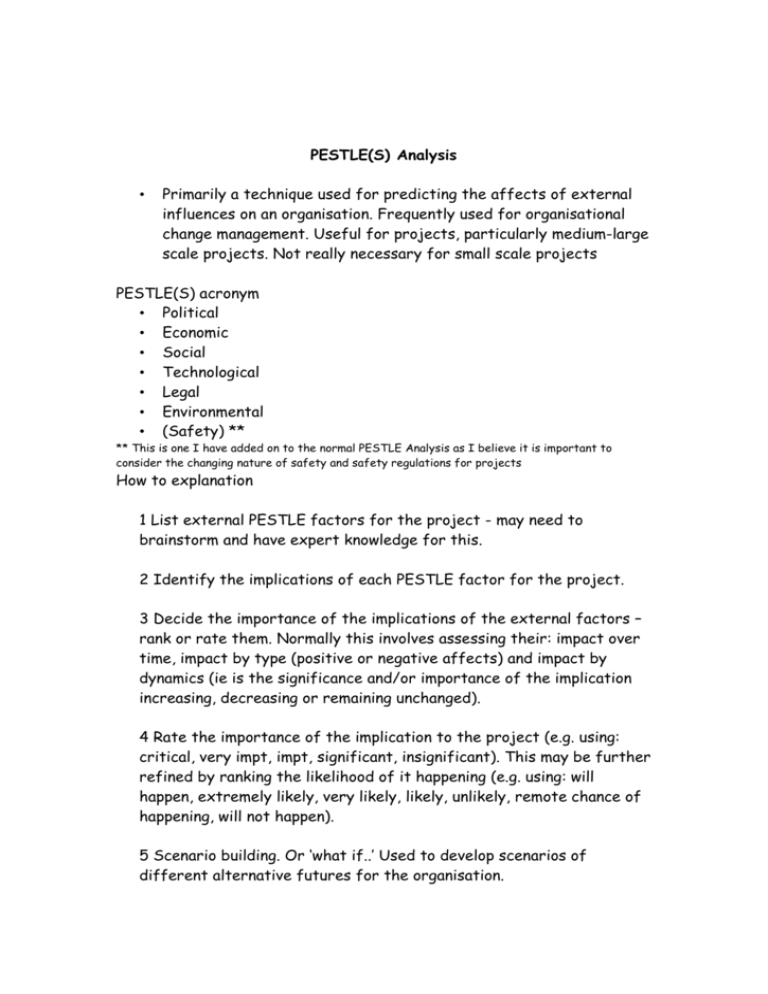Explanation how to here
advertisement

PESTLE(S) Analysis • Primarily a technique used for predicting the affects of external influences on an organisation. Frequently used for organisational change management. Useful for projects, particularly medium-large scale projects. Not really necessary for small scale projects PESTLE(S) acronym • Political • Economic • Social • Technological • Legal • Environmental • (Safety) ** ** This is one I have added on to the normal PESTLE Analysis as I believe it is important to consider the changing nature of safety and safety regulations for projects How to explanation 1 List external PESTLE factors for the project - may need to brainstorm and have expert knowledge for this. 2 Identify the implications of each PESTLE factor for the project. 3 Decide the importance of the implications of the external factors – rank or rate them. Normally this involves assessing their: impact over time, impact by type (positive or negative affects) and impact by dynamics (ie is the significance and/or importance of the implication increasing, decreasing or remaining unchanged). 4 Rate the importance of the implication to the project (e.g. using: critical, very impt, impt, significant, insignificant). This may be further refined by ranking the likelihood of it happening (e.g. using: will happen, extremely likely, very likely, likely, unlikely, remote chance of happening, will not happen). 5 Scenario building. Or ‘what if..’ Used to develop scenarios of different alternative futures for the organisation.











